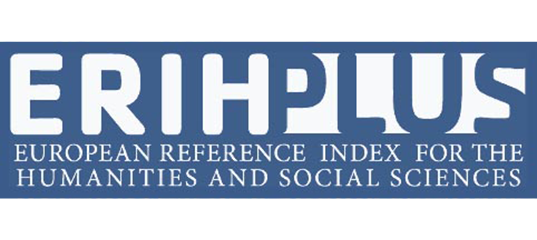Prevention and control of leishmaniasis: a systematic review
DOI:
https://doi.org/10.29018/issn.2588-1000vol5iss41.2021pp290-301Palabras clave:
leishmaniasis, prevention, control, bites, insectsResumen
The research was mainly focused on leishmaniasis, which is considered a chronic parasitic and endemic disease that has spread in many parts of the world. This disease is transmitted to humans via vectors through the bite of insects of the family Psychodidae. The overall objective was to develop a systematic review on the prevention and control of leishmaniasis in the population. In order to develop this research in the Methodology, a systematic review was developed, characterised by a process of collection, selection and evaluation of retrospective studies that allowed arguing the need for this research on the prevention and control of leishmaniasis. From 50 studies explicitly presented in an Excel database on the disease, 14 were selected as a final sample. It was found among the main results that leishmaniasis is an endemic disease controlled through antimonials. Malnourished people are more vulnerable, it is common in children in rural areas, and its clinical manifestations include fever, splenomegaly, anaemia and leucopenia. In conclusion, leishmaniasis is an endemic disease treated in the health sector mainly through care and control rather than prevention.
Descargas
Citas
Castaño M. Cutaneous leishmaniasis: a review focusing on Costa Rica. Revista Cutánea Ibero-Latino [Internet]. 2019 [cited 20 May 2021]; 45 (2): 134-136. Available at: https://www.medigraphic.com/cgi-bin/new/resumen.cgi?IDARTICULO=73823.
Abadías G. Cutaneous and mucocutaneous leishmaniasis. Revista Actas Dermo - Sifiliograficas. [Internet]. 2021 [cited 20 May 2021]; 112(21): 601-618. Available at: file:///D:/Downloads/S0001731021001083.pdf
OMS. Organización Mundial de la Salud. Facts and figures on Leishmaniasis in 2018. [Internet]. 2019 [updated 20 May 2021; cited 21 May 2021]; Available at: www.who.int/es/news-room/fact-sheets/detail/leishmaniasis.
Patiño S, Salazar L, Tovar C, Vélez I. Socio-epidemiological and cultural aspects of cutaneous leishmaniasis: conceptions, attitudes and practices in the populations of Tierralta and Valencia.Revista Salud Colectiva. [Internet] 2017 [cited 15 May 2021]; 13(1):123-138. Available at: https://www.scielosp.org/pdf/scol/2017.v13n1/123-138/es
Ortíz J. Cutaneous leishmaniasis: late treatment with favourable evolution. UTA Mediciencias. [Internet]. 2019 [cited 20 May 2021]; 3(3):78-83. Available at: https://scholar.google.com/citations?user=Bkz7LigAAAAJ&hl=es
Rosal R. Cutaneous leishmaniasis, Rev Pediatr Aten Primaria. [Internet].; 2013[citado 20 Mayo 2021]; 12(46): 263-271. Available at: http://scielo.isciii.es/scielo.php?script=sci_arttext&pid=S11.
Castro J, Ávila A, Bracho A, Preliminary study of cutaneous leishmaniasis in non-endemic areas of southern Manabí, Ecuador. Kasmera.[Internet]. 2019 [citado 20 Mayo 2021]; 47(2)24-27. Available at: https://www.redalyc.org/journal/3730/373063318010/html/#:~:text=Resumen
López L, Román J, Cardona, A. Risk Factors for Cutaneous Leishmaniasis: Systematic Review of Case-control Studies. Revista Archivos de Medicina [Internet].2017 [cited 20 May 2021]; 13(4): 1-9. Available at: file:///D:/Downloads/DialnetFactoresDeRiesgoParaLeishmaniasisCutanea-6278810.pdf
Navarrete C, Cevallos C, Jercyc M, Saldias C, Gonzalez S, Labarca J. Cutaneous leishmaniasis caused by Leishmania braziliensis and the use of liposomal amphotericin B. Communication of an imported clinical case. Rev Chilena Infectol [Internet]. 2018 Rev Chilena Infectol [Internet]. 2018 [cited 18 May 2021]; 35 (5): 612-616. Available at: https://scielo.conicyt.cl/pdf/rci/v35n5/0716-1018-rci-35-05-0612.pdf
Alvar J, Vélez ID, Bern C, Herrero M, Desjeux P, Cano J, Jannin J, den Boer M; WHO Leishmaniasis Control Team. Leishmaniasis worldwide and global estimates of its incidence. PLoS One. 2012; 7(5):e35671. Available at: https://pubmed.ncbi.nlm.nih.gov/22693548/
Neira L, Peña D, Vera A, Mantilla J, Escobar P. Cutaneous leishmaniasis induced by Leishmania viannia species in BALB/c mice and efficacy of a topical treatment. Revista de la Universidad Industrial de Santander. [Internet] 2019[cited 20 May 2021]; 51(1): 33-42. Available at: http://www.scielo.org.co/pdf/suis/v51n1/0121-0807-suis-51-01-33.pdf
Morales M. Redaccion medica. Leishmaniasis cases reported decrease in Manabí. [Internet]. 2017 [updated 20 Nov 2017; cited 21 May 2021]. Available at: https://www.redaccionmedica.ec/secciones/salud-publica/reporte-de-casos-de-leishmaniasis-disminuyen-en-manab--9128.
Cubas S, Centeno D, Arteaga K, López E. Clinical and epidemiological review of tegumentary leishmaniasis in central Peru. Revista chilena de infectología. [Internet]. 2019 [cited 20 May 2021]; 36(6): 707-715. Available at: https://www.scielo.cl/pdf/rci/v36n6/0716-1018-rci-36-06-0707.pdf
Crúzate S. Cost-benefit of the care process for users with cutaneous leishmaniasis in the Valle Hermoso health circuit, Santo Domingo de los Tsachilas [Internet].; 2017 [cited 20 May 2021] Available at: http://utm.edu.ec.21457.
Perez G. Leishmaniasis cutánea. Clinical manifestations and integration of social factors in the. Olympia. Revista de la Facultad de Cultura Física de la Universidad de Granma. 2018 Octubre; 15(5).
Rojo F. PRISMA Statement. Health and Nutrition Centre; 2018 [cited 20 May 2021]. Available at: https://www.centrosaludnutricional.com/que-es-la-declaracion-prisma-247.html#.
Olmedo M, Pérez A, Iriso A, Aránguez E, Abad I. Evolution and spatial analysis of leishmaniasis cases in a rural area adjacent to the Madridlocal and systemic community outbreak in the northwestern population of Pichincha. Rev Esp Salud Pública. [Internet] 2018 [cited 20 May 2021]; 92(20): 1-12. Available at: https://www.mscbs.gob.es/biblioPublic/publicaciones/recursos_propios/resp/revista_cdrom/VOL92/ORIGINALES/RS92C_201811084.pdf).
Nilce A, Lima D, Salomón O, Puppim L, Saboyá M, Sanchez M. Interaction between environmental and socioeconomic determinants of risk for cutaneous leishmaniasis in Latin America.Rev Panam Salud Pública. [Internet] 2021 [cited 20 May 2021]; 45(49): 1-10. Available at: https://scielosp.org/pdf/rpsp/2021.v45/e49/es).
Rojas B. Cutaneous leishmaniasis: a review focusing on Costa Rica. Revista Medicina Legalde Costa Rica. [Internet] 2019[citado 20 Mayo 2021]; 36 (2): 82-94. Available at: https://www.scielo.sa.cr/pdf/mlcr/v36n2/2215-5287-mlcr-36-02-82.pdf).
Gaitán H, Lasso G. Cutaneous leishmaniasis in the province of Magdalena Centro, Cundinamarca, Colombia. A case series. Univ Med. [Internet] 2017[citado 21 Mayo 2021]; 58(2):1- 4. Available at: https://revistas.javeriana.edu.co/index.php/vnimedica/article/view/19908/15818).
Piña C, Fernández M, Piña L. Clinical-epidemiological characterisation of infantile visceral leishmaniasis. Rev Cubana Pediatr. [Internet] 2020 [cited 20 May 2021]; 92 (3): 1-16. Available at: https://www.medigraphic.com/pdfs/revcubped/cup-2020/cup203g.pdf).
Sánchez J, Cañola J, Bejarano N. Eco-epidemiology of visceral leishmaniasis in Colombia (1943 - 2019): systematic review. Hecho Microbiol. [Internet] 2020 [cited 25 May 2021];11(1-2):22-60. Available at: file:///D:/Downloads/341964-Texto%20del%20articulo-209146-2-10-20210414.pdf).
Piccolo L, Pérez E, Álvarez L, Wang C, Sancho M. Leishmaniasis: Therapeutic options in the paediatric population. Medicina Legal de Costa Rica Edición Virtua. [Internet] 2018 [cited 20 May 2021]; 3[Internet] 2020 [cited 20 May 2021]5(1): 1-13. Available at: file:///D:/Downloads/341964-Texto%20del%20articulo-209146-2-10-20210414.pdf).
Bernardes H, Ferreira A, Gohm D, Fernandes L, Medeiros K, Vilges S. Epidemiological analysis of cases of American Cutaneous Leishmaniasis in a municipality of Triangulo Mineiro. REFACS. [Internet] 2019 [cited 20 May 2021]; 8 (1): 67-77. Available at: https://www.redalyc.org/journal/4979/497962779010/497962779010.pdf).
Rojas E, Paz D, Orellana V. Combined treatment of mucosal leishmaniasis following treatment failure with conventional treatment: case report. Gac Med Bol. [Internet] 2017 [citado 19 Mayo 2021]; 40(1): 46-48. Available at: http://www.scielo.org.bo/pdf/gmb/v40n1/v40n1a10.pdf).
Camilla Barros LCGC, Parente I, Vieira M, Lima C, Pereira M. Atypical presentations of cutaneous leishmaniasis: a systematic review. Acta Trop. [Internet] 2017 [cited 20 May 2021]; 172 (10): 240-254. Available at: https://pubmed.ncbi.nlm.nih.gov/28526427/).
Damasa P, MaraSempere , Lahigueraa A, Fernández C. Community outbreak of cutaneous leishmaniasis in the region of La Ribera: about Public Health measures.Enferm Infecc Microbiol Clin. [Internet] 2016 [cited 18 May 2021]; 35(6):338–343. Available at: https://www.elsevier.es/es-revista-enfermedades-infecciosas-microbiologia-clinica-28-pdf-S0213005X1630101X).
Descargas
Publicado
Cómo citar
Número
Sección
Licencia
Derechos de autor 2021 Los autores mantienen los derechos sobre los artículos y por lo tanto son libres de compartir, copiar, distribuir, ejecutar y comunicar públicamente el trabajo en sus sitios web personales o en depósitos institucionales, luego de su publicación en esta revista, siempre y cuando proporcionen información bibliográfica que certifique su publicación en esta revista.

Esta obra está bajo una licencia internacional Creative Commons Atribución-NoComercial 4.0.



























